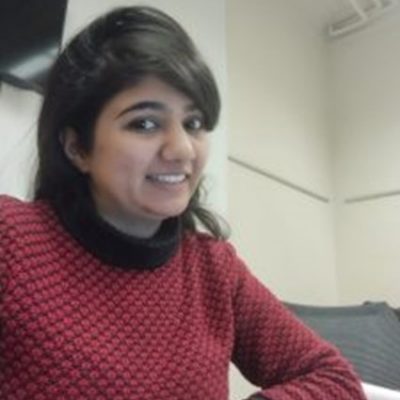Busting myths and misconceptions in learning using ‘True or False?’
Zeenar Salim

What is the idea?
‘True or False’ is an active learning activity whereby learners are actively engaged in supporting or refuting the statements and substantiating their responses with evidence. During this activity, learners restructure their ideas and develop evidence-based conceptions. Having sound knowledge, developed from argumentation and presentation of evidence, helps learners gain expertise in a subject area.
Why this idea?
Learners are not blank slates. They bring their ideas and conceptions to the instruction. Their conceptions stem from their prior lived experiences or instruction that they had undertaken in the past (Smith et al., 1994). Learners’ conceptions play a useful role in shaping the learning and acquisition of expertise.
From a constructivist perspective, instruction either supports or modifies learners’ existing conceptions. Continuous restructuring of the existing conceptions is a central condition for learning. The restructuring of learners’ conceptions mirrors the scientific process, whereby conjectures are either supported or refuted, as further evidence is searched for, produced, or becomes available (Foroushani, 2019; Smith et. al, 1994; Trotskovsky et al., 2013).
How could others implement this idea?
‘True or False?’ can be conducted asynchronously, by posting the statement and guidance on learning management systems. In this case, truth means a statement that is supported by the evidence in the literature, and false means the statement that is not supported by the evidence provided in the text. The purpose of the activity is to discuss content, reveal and resolve mis- and alternative- conceptions. The following section presents sample instructions for the asynchronous discussion.
Individually, students will:
- Write a statement (true or false) about the topic (less than 100 words). For example, eating excessive sugar can cause cancer.
- Select three statements written by peers or instructors. Identify whether the statement is true or false and convince others by providing evidence (100 – 150 words).
- Reply to your original post and argue for or against your peer’s identification of true or false. Convince your peer by providing evidence (100 – 150 words).
Learners interact with each other to identify and resolve the commonly or uniquely held misconceptions around the topic. They choose the statement that they want to comment on. Say, there are 10 learners in the asynchronous discussion, there would be 10 statements on a topic. Each student will respond to three statements. Instructor(s) or a volunteer student summarises the learning by providing evidence-based explanations and feedback where they find unresolved misconceptions and/or alternate explanations. Where statements cannot be classified as true or false, but somewhere in between, the instructor provides clarification and/or summary to collate the responses. Also, instructors must posit the explanations supported by evidence when discussion leads to any conflicting ideas and/or evidence.
Transferability to different contexts
The activity can be used in a variety of subject areas and can be implemented through asynchronous medium. Sample statements may include:
- Cancer is a contagious disease (Biology)
- More homework is equivalent to more learning (Education)
- Solopreneurs are their own bosses and are not answerable to anyone (Business studies)
- Humanist is the same as an atheist (Religious studies)
- Social workers are volunteers generally and are not paid well (Social work)
- Philosophy has no practical value (Philosophy)
- When an artist finds a gallery or studio, they can spend all their time in producing art (Arts)
- Earth is round (Physics)
- Temperature of a system always increases when heat transfers to the system, regardless of the flow of work (Engineering)
- Research is a linear process of identifying hypothesis, collecting evidence, and sharing results (Research studies)
- A variable can hold several values at the same time (Maths or Programming)
By providing such statements, faculty and learners can co-create the content, engage in constructing and reconstructing their arguments, and support their arguments with practical experience or scientific evidence. The activity provides an opportunity to develop and practice academic referencing as well.
The activity can be conducted online (synchronous or asynchronous) mode or in a face-to-face classroom setting. Particularly in an asynchronous environment, learners may have more time and can refer to learning resources (articles, readings, books, people, etc.) to think through the argument, find evidence and construct arguments, in comparison to online synchronous or face-to-face classroom. Best results are achieved when groups are limited to 7-10 people. It can be carried out through Google documents, Google Slides, Google Jamboard, Padlet wall, Flip-grid, Voice-thread, or written threaded discussions in any Learning Management System. Faculty and learners can choose the tool based on their comfort and expertise in using a learning tool.
Links to tools and resources
The instructor may select the tools that suit the purpose of instruction. In case of confidential and/or private discussions, it is recommended to use the university’s learning management system.
- Google Docs: https://docs.google.com/document/u/0/
- Google Slides https://slides.google.com
- Google Jamboard: https://jamboard.google.com/
- Padlet Wall: https://padlet.com
- Voice Thread: https://voicethread.com/
- Flip Grid: https://info.flipgrid.com/
References
Foroushani, S. (2019). Misconceptions in engineering thermodynamics: A review. International Journal of Mechanical Engineering Education, 47(3), 195-209. https://doi.org/10.1177/0306419018754396
Smith, J. P., diSessa, A. A., & Roschelle, J. (1994). Misconceptions reconceived: A constructivist analysis of knowledge in transition. The Journal of the Learning Sciences, 3(2), 115-163. https://psycnet.apa.org/doi/10.1207/s15327809jls0302_1
Trotskovsky, E., Sabag, N., Waks, S., & Hazzan, O. (2013). Students’ misunderstandings and misconceptions in engineering thinking. International Journal of Engineering Education, 29(1), 107-118.
Image Attribution
Group of people having a meeting by Startup Stock Photos is used under Pexels licence


